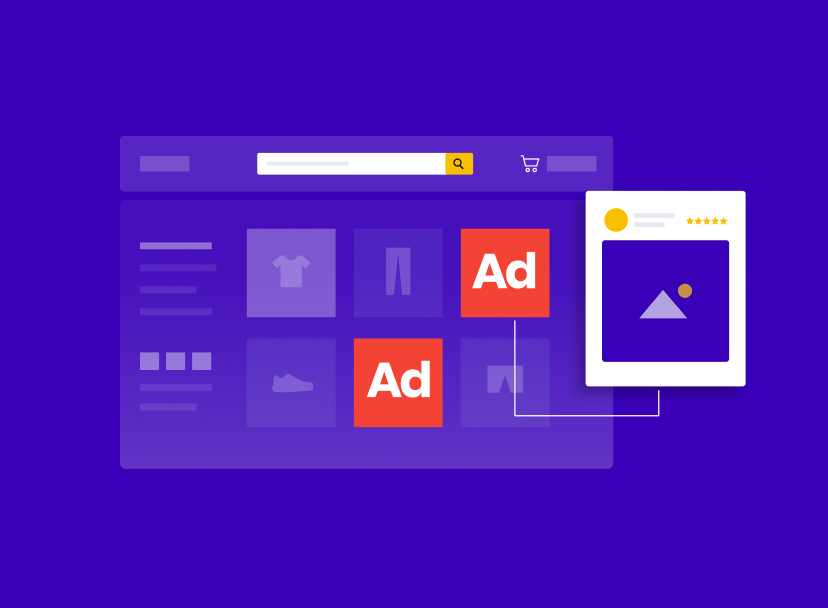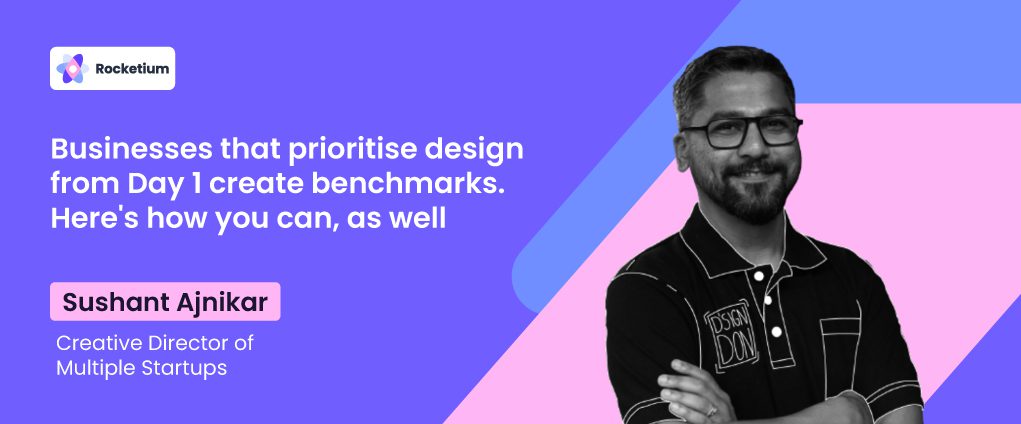Speaker Info

Sushant Ajnikar
Creative Director
Businesses that prioritise design from Day 1 create benchmarks. Here’s how you can, as well ✍️
Cult.fit’s Ex. Creative Director Spills the Beans on Why Design in Branding Matters Right from The Inception
Since the emergence of numerous social media platforms, marketing has gone on to another level. But with the humongous amount of posts and ads appearing across all the social handles, what sets your marketing collateral apart from the rest? It is a catchy and persuasive design.
However, startups or small level businesses can’t always afford to depend on external agencies for their design needs due to the huge costs involved.
In such cases exploring and depending on modern design automation tools will be a smart choice. This will not only help you automate your creative requirements but also save you from spending tons of amount in the process. All you need in hand is a robust plan a few days ahead of your brand’s launch.
In the recent episode of our podcast series, ‘Spilling the Magic Beans,’ Sushant Ajnikar, the creative director of multiple startups, unraveled why design in branding matters right from its inception and how startups can smartly automate this otherwise expensive process through the right strategy.
He further spilled the beans on how startups like Cult.fit emphasized design and became one of India’s leading fitness brands in less than a decade.
Why Design in Brand Building is So Crucial
Think of some famous brands like Nike, Dropbox, or Adidas. Doesn’t the classical swoosh, signature blue box, and trefoil icon immediately splash on your mind?
This is what a unique brand identity does to its customers. However, strong brand identity is built through maintaining brand consistency in which design plays a crucial role.
The inclusion of design in a brand’s marketing campaigns has numerous benefits—from driving conversion increasing product visibility to communicating the business value.
But brands cannot achieve brand consistency with any random design: creating a uniform brand perception and identity depends on consistent use of uniform colors, design, and brand guidelines right from the brand’s inception.
In our podcast, one of the biggest takeaway from Sushant is: “If we don’t make our product good looking from the first place, it will not intrigue, be it an investor, be it a target audience, or be it anyone else.”
Design as a part of the whole ecosystem
When building a brand identity, the tone, color, and feel of its marketing collaterals should be coherent across assets—digital or physical. Founders with a clearer and long-term vision (in design and product) are most successful in creating a long-lasting impact on their customers.
Recalling his days in Cult.fit as a Creative Director, Sushant says: “Where founders have been very critical about how design should be part of their ecosystem across, not just app, not just website, but everything, including their office space… It has been brilliant. I think it comes from the founders. I always say that, and I will always second that.”
Therefore, creating a uniform brand identity by maintaining brand consistency has numerous benefits:
- It enables the alignment of separate business units.
- It establishes a consistent brand identity.
- It standardizes the brand’s perception in the customer’s mind.
Dropbox–the popular file-sharing service, is one of the best examples of consistent design in branding. Across all its communication, Dropbox never misses using the now-iconic blue box logo. It follows the same style in all its brand’s designs–be it in emails & newsletters, app icons, desktop logo, and so on.
Building an intrigue from day one
If startups work on excellent design right from day one, it can help them build intrigue for their customers and investors. In addition, the exceptional design may spare startups from working on the product first.
Rather, they can simply show the design to the investors and then start working on the product later once they bag the funding. If design intrigues the investor, chances of seed funding are more for their product even before its inception.
This way, startups can save three to four months which they otherwise would have wasted building a bad-looking product. In any case, if their design fails to convince the investors, it’s much easier to rework a part than the whole product.
For example, without even making a product, through a prototype design, a startup can exhibit how its app, user interface, or a particular set of screens will look like.
Sushant puts it correctly: “If you show a skeletal structure versus a fully developed architectural structure, the difference is massive.”
The saying “the first impression is the last impression” goes with the products and brands. A product has to be good-looking from the day it has been launched.
Design works at the subconscious level. Be it an investor or a customer: the face value and personality of the brand is the only way to build intrigue about the product from day one.
He also says: “Startups that invest time into the design at the very beginning ironically move faster and save money in the long run.”
Therefore, investing time and money in design in branding, in the beginning, comes with multiple benefits:
- It avoids revamping or reshuffling the design and marketing collateral.
- It saves time and money in the longer run.
- It helps the brand grow consistently and faster.
Design thinking sessions and user testing
Design thinking is a creative process focussing on developing an understanding of the target audience’s buying behavior and interests. Design thinking sessions also help the designers understand the vision of founders.
Sushant explains that through design thinking sessions, a design team can carve out deeper questions from the generic ones to understand the brand vision better.
For instance, some of the most generic ones could be:
- What are the founders looking for in their brand?
- Who are the competitors?
- Who is the target audience?
However, the design team must drill deeper into questions to fully understand the brand persona. Such questions could sound like:
- What emotion do the founders want to target when focusing on a particular age group?
- What are the emotions of the target audience?
- Is finance a critical factor, and if so, who should be the target group, a 20-year-old or the people in their mid-30s?
Another thing that comes in knowing the user is user-testing, for which remote or online calls only are not sufficient. As Sushant explains: “Remote is best, but if you can meet them in person, you might learn five other things that couldn’t happen on a call.”
This is because one can better understand the human behind the customer in a better way with in-person meetings.
Planning content from the beginning helps
Planning content as per different formats right from the beginning is an imperative in today’s times. For example, while planning performance marketing, designers have to imagine and determine how the same content could look across all the audio-visual platforms—banners, blogs, social media content, or email campaigns.
Thankfully, with the help of modern and easy designing tools, designers can make these designs without a professional designer.
“Rocketium is one such tool that enables automating designing at a simple click of the button and simply plugging in sheets,” says Sushant.
In the end, the two biggest takeaways from Sushant’s podcast are:
- Firstly, startups should iterate designs quickly to understand what works and what doesn’t.
- Secondly, designers must use the time and efforts spent in the earlier design thinking sessions by understanding audiences’ motivations and creating content and visuals that resonate.
Rocketium, a creative automation platform, can help you achieve the above two objectives with its specialized marketing, creative, product integration, and automation solutions. We at Rocketium, with our specialized marketing solutions, can help you launch targeted campaigns faster and more efficiently. We can also assist you in removing redundant production through our creative solutions and creating automated marketing collaterals that work. Book a demo today to know how we can help you in your brand-building efforts.













